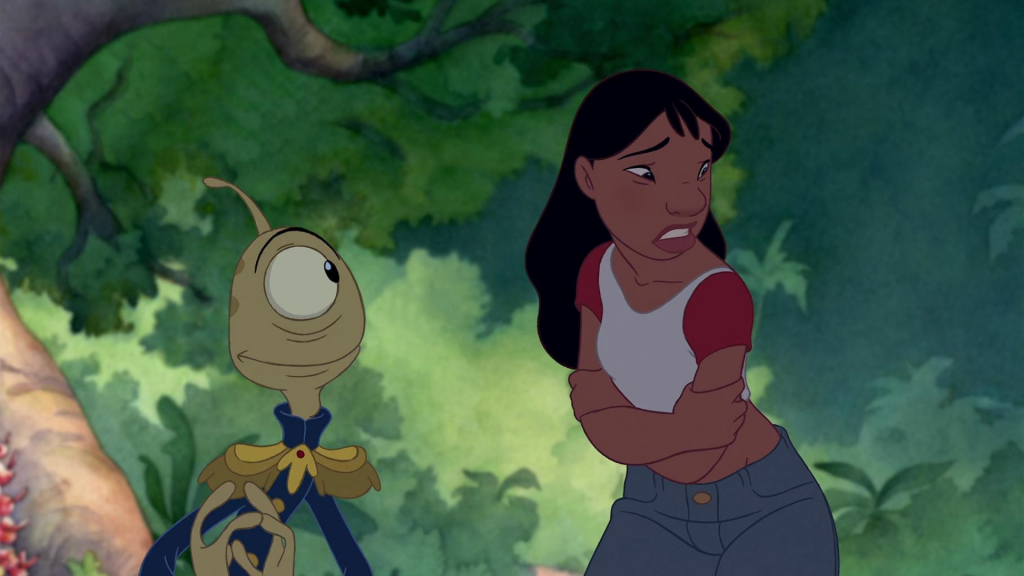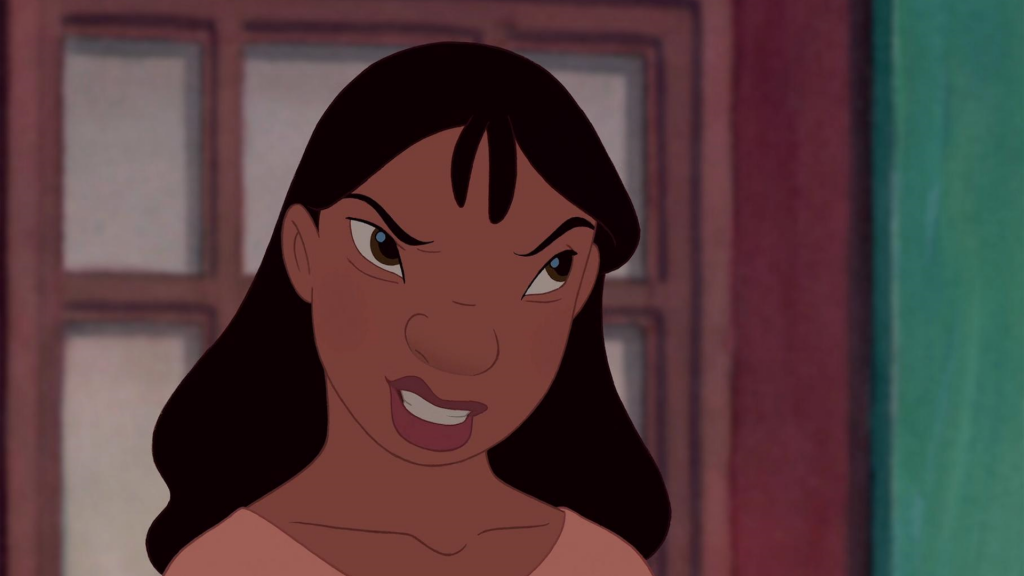Following on from the Disney Renaissance of the 1990s, the 2000s is one of Walt Disney Animation Studios’ least commercially and critically successful eras. However, alongside box-office flops like Atlantis: The Lost Empire and Treasure Planet, and critical failures like Chicken Little, Disney released Lilo & Stitch. The animated science-fiction comedy drama directed by Chris Sanders and Dean DeBlois features an escaped alien experiment with a penchant for destruction, heart-wrenching themes of family, belonging, and grief, and six Elvis songs. To say it is a wild departure from the classic fairy-tale musicals that had come before it is no understatement.
Twenty years on, when most of Disney’s 2000s output has faded into relative obscurity, Lilo & Stitch remains a beloved cornerstone of the Disney canon. However, whilst its titular characters are immortalised in spin-offs, games, and toys, the real emotional heart of the film grows ever more unappreciated; Lilo’s overburdened and overworked older sister, Nani.
Since the film’s original intended audience are all far closer in age to Nani than to Lilo, her role in the film can be cast in sharper relief. The narrative demands that she do the impossible; work a steady job, keep a house, and look after her little sister, all at the young age of nineteen. Raising Lilo, whose grief makes her act out in destructive, frustrating ways, is no mean feat. This task is Nani’s whole world and although she tries tirelessly, she often fails. It is her near-loss of Lilo that hits the hardest of any emotional beat in the film.

Nani’s relationship with her sister is tumultuous, largely due to her position as both sister and substitute mother. The pair fight, threaten each other, insult each other, and chase each other around the house. The scene where Nani runs full-tilt after a yelling Lilo might be considered jarring, but only by those who do not have a sibling. Sisters can activate a level of rage inaccessible to everyone else; this is something that Lilo & Stitch understands, depicts, and accepts. What the film also accepts is that, while siblings may yell, fight and profess hatred for one another, the bond that allows for these transgressions is often one of deep understanding and love.
This does not excuse the dysfunction of the Pelekai home at the start of the film, a dysfunction that is expressed with an unflinching realism not often seen in animated films aimed at children. The house is a mess, the yard uncared for, dishes piling up on the rickety hob, and the nails wedged into the door hinges by Lilo add to the chaos nicely. This is the home of two children struggling with the loss of their parents. The film feels so visceral and emotional because we join the story when things have already gone wrong. It isn’t like Frozen or Encanto, where we join a seemingly perfect family and then watch how things go awry. In Lilo & Stitch, the family is already ‘broken’, and it is impossible not to sympathise with Nani as she tries to spin every plate at once in order to not lose her sister. The stakes, though simple, are higher than those of any other Disney film.
When Nani takes Lilo to the shelter to adopt a dog, in the hopes that it’ll provide Lilo with a steadfast companion, Lilo picks out an alien. There is much to be said for Lilo’s choice of name—‘Stitch’—implying that she hopes this pet will ‘stitch’ her ‘broken’ family back together. Initially, Stitch does the opposite, causing Nani to lose her job, thus placing the Pelekais at risk of separation. However unsettled as she is by Stitch, Nani does not try to rehome him, and when his behaviour causes her to lose her job, she lies to Lilo about the reason in order to save her sister’s feelings. Nani will not forsake Stitch because he is now family and cannot be left behind or forgotten. This is displayed most distinctly in the finale, where Nani and Stitch are forced to work together to save Lilo. In doing so, Lilo’s goal for Stitch comes to fruition, with sister and companion united to save one of their own.
With Lilo & Stitch, Disney captured the complexity of sibling dynamics, and yet the very same studio struggles to replicate this success now. Nani and Lilo seem closer to real-life sisters than Anna and Elsa in Frozen, or even Mirabel and Isabela in Encanto. Perhaps it no longer serves Disney to present more realistically-nuanced relationships, as sanitised sisterhood fits their marketing strategies or musical numbers better than the complicated reality ever could. Perhaps the absence lies in the writing, as Sanders and DeBlois have since moved onto other studios (namely to DreamWorks, where the pair co-wrote and co-directed How to Train Your Dragon, another brilliant character-led piece).

Nani’s dedication to Lilo leaves her with little time to act her age. This is something we see reflected in her interactions with David, her friend and colleague. At first, he is presented as irritatingly persistent in his pursuit of Nani, who is quick to shoot down his advances. However, this is overhauled by his behaviour throughout the rest of the film, where he constantly supports the Pelekai family without doubt, question, or expectation that he will receive anything in return. His relationship with Nani feels unusually natural for Disney, who tend to favour fairy-tale melodrama over understated realism. There are no dramatic arguments, no Hollywood kiss, and certainly no wedding bells, and yet David’s unshakable belief in Nani is as swoon-worthy as any other Disney romance. Once again, it feels as though Disney attempted to achieve a similar dynamic with Anna and Kristoff in Frozen II, but where that couple was obscured by an over-complicated plot, awkward storytelling, and interfering management, Nani and David benefit from the simplicity of DeBlois and Sanders’ vision.
Even after twenty years, Lilo & Stitch shines on undimmed. A faultless diamond borne from the rough of Disney’s least illustrious era. The film is one of Disney’s finest and most accurate-to-life depictions of sisterhood, family, and romance, featuring one of Disney’s most underappreciated heroines in Nani. Whimsical, humorous, but with real heart and an unfailing dedication to its central themes, Lilo & Stitch shines as brightly in the harsh light of 2022, as it did in 2002. And with Disney seemingly favouring family-focused films now more than ever, there is no doubt that it will continue to shine for many years to come.
Words by Briony Havergill
Support The Indiependent
We’re trying to raise £200 a month to help cover our operational costs. This includes our ‘Writer of the Month’ awards, where we recognise the amazing work produced by our contributor team. If you’ve enjoyed reading our site, we’d really appreciate it if you could donate to The Indiependent. Whether you can give £1 or £10, you’d be making a huge difference to our small team.
